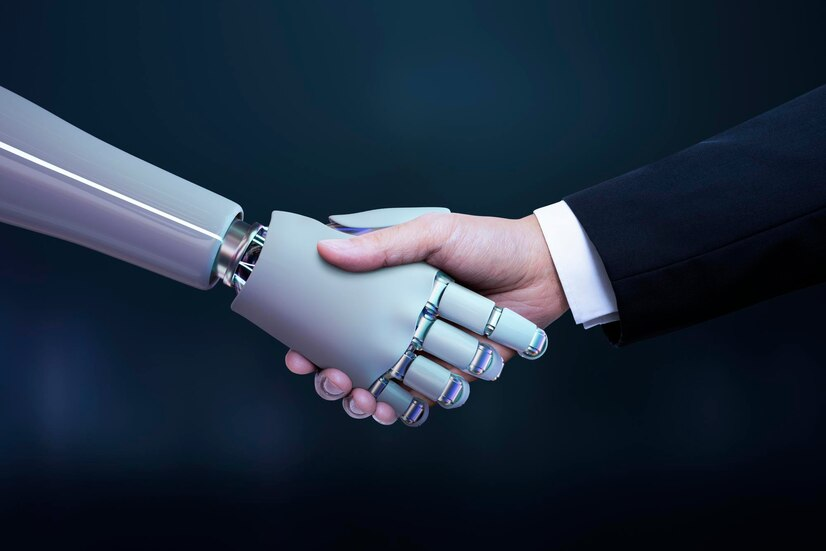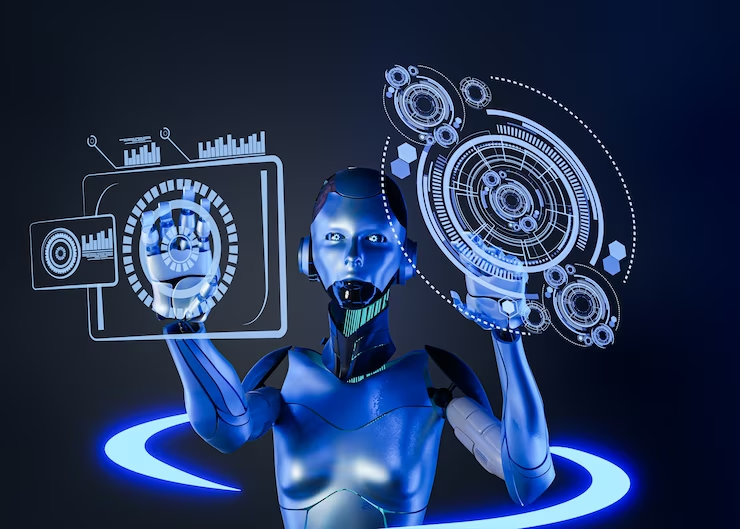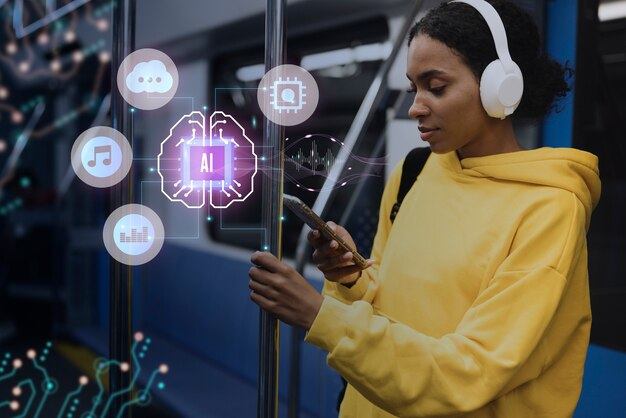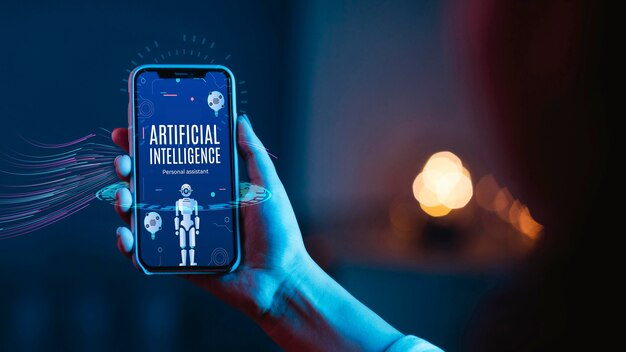GPT-3 Personal Assistant: Unveiling the Evolution of AI Assistants
Get the latest insights on GPT-3 personal assistant technology and discover how it can revolutionize your productivity. Find out more now!

In a world where productivity is key, personal assistant technology has become a powerful tool for streamlining our daily tasks and maximizing efficiency. The human interaction aspect of this project is paramount. Enter the GPT-3 personal assistant - an artificial intelligence-powered tool, similar to Siri or Google Assistant, that promises to revolutionize the way we work on projects. Gone are the days of juggling multiple responsibilities or spending hours searching for answers with virtual personal assistants. With the advancement of personal assistant technology, tasks are now easier to manage and documents are more readily accessible. With its advancements in language understanding, this virtual assistant can answer complex queries, respond quickly to emails, and engage in human-like interactions for any project.
The demand for virtual assistants across various industries continues to grow exponentially. From managing schedules, organizing meetings, and assisting with language translation to understanding complex texts and documents, the GPT-3 personal assistant app has the potential to be your ultimate sidekick. With its advancements in code, this app is designed to streamline your tasks and make your life easier. It's like having virtual personal assistants, a dedicated team member who never needs a lunch break. With the advancements in personal assistant technology and the rise of AI assistants, the assistant experience has been revolutionized.
In this blog post, we'll discuss how personal assistant technology advancements in language processing and code can enhance productivity, simplify tasks, and ultimately transform the way we work. So buckle up as we embark on this exciting journey into the realm of AI-powered personal assistants and explore the latest advancements in this field. Check out Freelancertogo for more blogs and freelancing opportunities!

Unveiling GPT-3 as a Personal Assistant
GPT-3, which stands for Generative Pre-trained Transformer 3, is an advanced language model developed by OpenAI. This state-of-the-art model has garnered significant attention due to its remarkable ability to generate human-like text based on given prompts. What sets GPT-3 apart is its sheer scale, boasting a staggering 175 billion parameters.
One of the key features of GPT-3 is its impressive natural language processing capabilities. It can understand and respond to complex queries with remarkable accuracy and fluency. Whether it's answering questions, providing explanations, or engaging in conversations, GPT-3 can handle a wide range of tasks with ease.
The versatility of GPT-3 extends across various applications and domains. As a personal assistant, GPT-3 has the potential to transform the way we streamline tasks and save time. Imagine having an AI-powered assistant that can automate repetitive and mundane tasks, freeing up valuable time for more meaningful work.
With the help of GPT-3 as a personal assistant, efficiency and productivity can be significantly enhanced. Instead of spending hours searching for information or drafting emails from scratch, you can rely on GPT-3 to provide accurate and relevant information instantly. This not only saves time but also ensures that you have access to reliable information at your fingertips.
Furthermore, GPT-3's ability to adapt and learn from user interactions makes it even more valuable as a personal assistant. Over time, it becomes familiar with your preferences and writing style, allowing for more personalized assistance. This level of customization enhances the overall user experience and makes working with GPT-3 feel like having a dedicated virtual assistant by your side.
The benefits of using GPT-3 as a personal assistant extend beyond individual users. In business settings, this AI-powered assistant can streamline workflows by automating routine tasks such as data entry or generating reports. This frees up employees to focus on more strategic and creative aspects of their work, ultimately driving innovation and growth.
While GPT-3 offers immense potential as a personal assistant, it's important to acknowledge its limitations. As an AI model, GPT-3 relies on the data it has been trained on, which means there may be instances where it provides inaccurate or biased information. It's crucial to exercise critical thinking and verify the information generated by GPT-3 when necessary.
The Evolution of AI Assistants
The rise of GPT-3 has brought about a significant evolution in the field of AI assistants. This advanced language model developed by OpenAI has gained immense popularity and is being adopted across various industries. Its capabilities have reshaped customer support and service interactions, as well as revolutionized content creation and generation.
GPT-3's increasing popularity can be attributed to its ability to understand and generate human-like text. It can analyze vast amounts of data and provide accurate responses, making it an invaluable tool for customer support teams. With GPT-3, businesses can automate their customer service processes, reducing response times and improving overall efficiency.
In addition to customer support, GPT-3 has also made a significant impact on content creation. Its natural language processing capabilities allow it to generate high-quality articles, blog posts, and even code snippets. This has proven to be particularly useful for content creators who need assistance with generating ideas or expanding on existing concepts.
OpenAI's role in the development of GPT-3 cannot be understated. As pioneers in the field of AI, OpenAI has been at the forefront of developing advanced language models that push the boundaries of what is possible. Their commitment to democratizing access to AI technologies like GPT-3 ensures that these powerful tools are accessible to a wide range of users.
OpenAI envisions a future powered by intelligent virtual assistants that can assist individuals in various aspects of their lives. These virtual personal assistants have the potential to streamline daily tasks, provide personalized recommendations, and enhance productivity. With advancements in artificial intelligence, these assistants will continue to evolve and become more integrated into our everyday lives.
Imagine having a personal assistant like Siri but with enhanced capabilities provided by GPT-3. You could rely on your virtual assistant not only for scheduling appointments or setting reminders but also for conducting research or drafting emails with impeccable grammar and style.
As AI technology continues to advance, we can expect personal assistants like GPT-3 to become even more sophisticated. They will not only understand and respond to our needs but also anticipate them, making our lives easier and more efficient.

Navigating GPT-3's Capabilities
Understanding GPT-3 GPT-3, or Generative Pre-trained Transformer 3, is an advanced language model that has gained significant attention for its remarkable capabilities as a personal assistant. This AI-powered model is built on a sophisticated architecture and operates by processing vast amounts of data to generate coherent and contextually relevant responses.
The underlying architecture of GPT-3 is based on transformers, which are neural networks designed to process sequential data efficiently. By leveraging self-attention mechanisms, transformers can capture dependencies between words in a sentence and understand the broader context in which they appear. This enables GPT-3 to generate responses that are not only grammatically correct but also coherent and meaningful.
One of the key features of GPT-3 is its ability to process information from various sources. It can analyze text inputs provided by users and use them to generate appropriate responses. The model has been trained on a diverse range of texts from books, articles, websites, and other written materials. As a result, it possesses extensive knowledge across different domains and can provide valuable insights or answer questions accurately.
Limitations While GPT-3 showcases impressive language model capabilities, it does have certain limitations that need to be considered. One area of concern is the potential for biases or inaccuracies in generated responses. Since the model learns from existing data available on the internet, it may inadvertently reproduce biases present in those texts. Therefore, it becomes crucial for developers and users alike to be mindful of this aspect when utilizing GPT-3 as a personal assistant.
Another limitation lies in the fact that GPT-3 lacks genuine understanding or consciousness like humans possess. Although it can mimic human-like conversations effectively, it doesn't truly comprehend concepts or emotions behind the words it generates. Consequently, there may be instances where human intervention is necessary to ensure accurate interpretation or handling of sensitive topics.
Moreover, GPT-3 may struggle with ambiguous or complex queries that require nuanced understanding. While it excels at generating responses based on patterns in the data it has been trained on, it may falter when faced with uncommon or highly specific requests. In such cases, human intervention and guidance become essential to provide accurate and reliable information.
Building a Virtual Assistant with GPT-3
Developing a virtual assistant powered by GPT-3 involves an intriguing journey of exploration and refinement. The development process revolves around training and fine-tuning the model to create an intelligent personal assistant that can assist users in various tasks.
The development journey begins with training the GPT-3 model using vast amounts of data to enable it to understand and generate human-like text. This initial training phase helps the model grasp language patterns, grammar, and context. However, it is important to note that GPT-3 does not possess inherent knowledge or consciousness; rather, it learns from the data it is exposed to.
Once trained, the iterative process of fine-tuning begins. Fine-tuning allows developers to tailor GPT-3's behavior for specific use cases and improve its performance. By providing feedback on generated responses and adjusting parameters, developers can shape GPT-3 into a more accurate and reliable personal assistant.
Collaboration plays a crucial role in refining GPT-3's capabilities. Developers work together with domain experts and users to collect feedback on the system's performance. This collaborative effort helps identify areas where improvement is needed and guides further fine-tuning iterations. By incorporating diverse perspectives, developers ensure that GPT-3 meets user expectations across different domains.
Now let's explore the benefits and advantages of using a GPT-3-powered personal assistant in daily tasks.
Firstly, leveraging a virtual assistant like GPT-3 can significantly enhance productivity. With its ability to understand natural language queries, users can interact with the assistant through text or voice commands effortlessly. Whether it's scheduling appointments, answering questions, or generating content, GPT-3 can handle various tasks quickly and accurately.
Secondly, accuracy is another advantage of using a GPT-3 personal assistant. The model has been trained on vast amounts of data from diverse sources, enabling it to provide reliable and well-informed responses. This accuracy can be particularly helpful when dealing with complex or specialized topics, where having access to up-to-date information is crucial.
Furthermore, GPT-3's speed is a valuable asset. The model can process and generate responses rapidly, allowing users to receive immediate assistance. Whether it's retrieving information or performing calculations, the speed of a GPT-3-powered personal assistant can save time and streamline workflows.

Real-world Applications of GPT-3 Assistants
GPT-3, the powerful language model assistant developed by OpenAI, has a wide range of real-world applications across various industries. This section will explore some of the key use cases where GPT-3 personal assistants can be incredibly helpful and efficient.
One of the primary areas where GPT-3 excels is in research, writing, and data analysis. Researchers and writers can leverage its natural language processing capabilities to generate high-quality content quickly. For example, GPT-3 can assist in writing articles, blog posts, and even academic papers by providing relevant information and structuring the content effectively.
Moreover, GPT-3's ability to analyze large sets of data makes it a valuable tool for data scientists and analysts. It can help with tasks such as data cleaning, visualization, and predictive modeling. By understanding complex instructions and queries, GPT-3 can provide accurate insights and recommendations based on the given data.
The potential for GPT-3 personal assistants extends beyond research and data analysis. In healthcare, for instance, these assistants could aid doctors in diagnosing illnesses or suggesting treatment options based on patient symptoms. They could also assist patients in understanding medical terms or providing general health advice.
Similarly, in finance, GPT-3 assistants have the potential to revolutionize customer service by answering common questions about banking products or investment strategies. They could also help financial advisors analyze market trends or provide personalized recommendations to clients based on their financial goals. Not to mention, it can also help in dealing with difficult clients by filtering thoughts into more professional and articulate messages when addressing their concerns.
Several factors are considered. Accuracy is a crucial aspect that determines how reliable the generated content or analysis is. While GPT-3 has shown impressive results in many scenarios, it may still produce errors or require human intervention for certain complex tasks.
User feedback plays a significant role in analyzing the effectiveness of GPT-3 assistants. By collecting and analyzing user experiences, developers can identify areas for improvement and refine the model further. This iterative process ensures that GPT-3 continues to evolve and provide better assistance over time.
Introducing GPT-4 into Personal Assistance
GPT-3 has already revolutionized the world of personal assistance with its impressive language understanding and generation capabilities. However, as technology continues to advance at a rapid pace, we can't help but wonder what the future holds for AI-powered personal assistants.
GPT-4 vs GPT-3
As we anticipate the release of GPT-4, it's natural to speculate on the advancements and improvements that this new iteration might bring. While we don't have specific details about GPT-4 yet, there are several areas where we can expect enhancements.
One area that could see improvement is language understanding. GPT-3 already demonstrated an impressive ability to comprehend context and generate coherent responses. With GPT-4, we can anticipate even greater accuracy in understanding complex queries and providing more nuanced answers.
Another aspect that might be addressed in GPT-4 is its limitations. Despite its remarkable capabilities, GPT-3 occasionally produces responses that lack factual accuracy or coherence. We can hope that with the next iteration, these shortcomings will be minimized or eliminated altogether, resulting in more reliable and trustworthy interactions.
Advantages of GPT-4
The introduction of GPT-4 brings forth numerous potential benefits and enhancements for personal assistance applications. One significant advantage could be improved language generation capabilities. With each iteration, OpenAI strives to refine their models' ability to generate human-like text. It is likely that GPT-4 will continue this trend by producing responses that are not only accurate but also indistinguishable from those written by humans.
Furthermore, as AI systems become more context-aware, they can provide more relevant and personalized responses. This means that with the advent of GPT-4, our digital assistants may better understand the nuances of our queries and tailor their answers accordingly. For example, if we ask for restaurant recommendations, GPT-4 might consider our dietary preferences, location, and previous dining experiences to provide more tailored suggestions.
Another advantage that GPT-4 could potentially bring is improved efficiency. As models become more sophisticated, they can process information faster and generate responses with reduced latency. This means that interactions with personal assistants powered by GPT-4 could be even more seamless and instantaneous than those with their predecessors.
Challenges with Advanced AI Assistants
As advanced AI assistants like GPT-4 become more prevalent, it is important to consider the potential drawbacks and ethical considerations that come along with their capabilities. While these assistants offer a range of benefits, there are challenges that need to be addressed for responsible deployment and usage.
Potential Drawbacks
When introducing GPT-4 into personal assistance, it is crucial to identify and anticipate potential drawbacks or challenges that may arise. While these advanced AI systems have the ability to provide personalized and efficient support, they are not without limitations. One challenge is ensuring the accuracy and reliability of the information provided by these assistants. As powerful as they may be, there is always a possibility of errors or misinformation being generated.
Another aspect to consider is the ethical implications of using AI-powered personal assistants. With GPT-4's enhanced capabilities, there is a need for increased transparency in data handling to ensure privacy and security. Users must have confidence that their personal information will be handled responsibly and protected from misuse.
Furthermore, unintended consequences can arise from relying heavily on advanced AI systems. It is crucial to strike a balance between leveraging the benefits of these technologies while also considering potential job displacement or over-reliance on AI assistants. Careful consideration should be given to how these technologies are integrated into workflows and how they complement human capabilities rather than replacing them entirely.
Ethical Considerations
The use of AI-powered personal assistants raises important ethical considerations that must be addressed. Privacy concerns are at the forefront. As GPT-4 collects and processes vast amounts of information, steps must be taken to ensure that user privacy rights are respected throughout the entire assistant experience.
Transparency in data handling is another key ethical consideration. Users should have visibility into how their data is being used and what decisions are being made based on that data. This transparency builds trust between users and AI systems, promoting responsible and ethical usage.
Job displacement is also a concern. While these systems can streamline workflows and increase efficiency, there may be potential job losses in certain industries. It is important to consider the impact on employment and develop strategies to mitigate any negative consequences.

The Future Trajectory of AI Assistants
As we delve into the potential of GPT-3 personal assistants, it becomes evident that they hold immense promise for the future trajectory of AI technology. These advanced AI assistants have the capability to make predictive breakthroughs and continuously learn, revolutionizing the way we interact with technology.
Predictive Breakthroughs
One of the most exciting aspects of GPT-3 personal assistants is their ability to make accurate predictions. By analyzing vast amounts of data, these AI assistants can assist in forecasting trends or outcomes with a remarkable level of accuracy. Imagine having an assistant that can analyze market trends and predict which investments are likely to yield the best returns. With this predictive capability, individuals and businesses can make informed decisions based on data-driven insights.
By leveraging machine learning algorithms and natural language processing, GPT-3 personal assistants can process large volumes of information quickly and efficiently. This enables them to identify patterns, correlations, and trends that may not be immediately apparent to humans. As a result, these AI assistants can provide valuable insights that aid in decision-making processes across various domains.
Continuous Learning
Another significant aspect of GPT-3 personal assistants is their ability to continuously learn and improve over time. Unlike traditional software programs that require manual updates, these AI assistants have the capacity to adapt and grow through exposure to new data.
Through continuous learning, GPT-3 personal assistants become more proficient at understanding human language nuances and context. They can refine their responses based on user interactions and feedback, ultimately enhancing their overall performance.
Furthermore, this concept of continuous learning opens up possibilities for lifelong learning and knowledge expansion within AI technology. As GPT-3 personal assistants accumulate knowledge from diverse sources, they become repositories of information capable of providing accurate answers to a wide range of queries.
For example, imagine having an AI assistant that has been exposed to medical literature from around the world. It could provide accurate and up-to-date information on various medical conditions, treatments, and research findings. This wealth of knowledge can be invaluable for healthcare professionals and individuals seeking reliable medical advice.
Making GPT-3 Accessible
GPT-3, the revolutionary AI language model developed by OpenAI, has the potential to transform various industries and enhance productivity. However, for this technology to truly make a difference, it needs to be accessible to a wide range of users.
Availability
To make a GPT-3 personal assistant available to users, OpenAI has provided access through APIs (Application Programming Interfaces) or specific platforms. This means that developers can integrate GPT-3 into their applications or services, allowing users to benefit from its capabilities. By offering APIs as a means of accessing GPT-3, OpenAI enables developers to harness the power of this advanced AI model without having to build everything from scratch. This is great for people looking to start a career as a virtual assistant with the use GPT-3.
However, it is important to note that there may be limitations or restrictions on access depending on factors such as usage quotas or subscription plans. These measures are in place to manage demand and ensure fair usage across different user groups. While these limitations may pose some challenges for certain users or organizations with specific requirements, they also help prevent abuse and maintain the performance and availability of GPT-3 for all users.
Accessibility Challenges
While making GPT-3 available is crucial, ensuring its accessibility presents additional challenges. One aspect is addressing the needs of users with disabilities or language barriers. It is essential that AI technologies like GPT-3 are inclusive and provide equal opportunities for everyone. Efforts are being made by OpenAI and other organizations in the field to develop solutions that cater to diverse user groups.
For individuals with visual impairments, accessibility features such as screen reader compatibility can greatly enhance their experience when interacting with GPT-3 personal assistant. Similarly, providing multilingual support ensures that language barriers do not hinder anyone from utilizing the benefits of this powerful tool.
Moreover, efforts are being made to ensure that GPT-3 personal assistant is designed with user-friendliness in mind. User interfaces and interactions are being optimized to accommodate users of varying technical expertise, making it easier for individuals with limited AI knowledge to leverage the capabilities of GPT-3.
Inclusivity and equal access to AI technologies like GPT-3 are not only important from an ethical standpoint but also contribute to the overall advancement and adoption of these technologies. By addressing accessibility challenges, we can unlock the full potential of GPT-3 personal assistant and empower a broader range of users.
Conclusion
So there you have it, the power of GPT-3 as a personal assistant. We've explored its capabilities, seen real-world applications, and even looked ahead to the future with GPT-4. It's clear that AI assistants are rapidly evolving, becoming more sophisticated and integrated into our daily lives.
But as we embrace these advancements, we must also acknowledge the challenges they present. Privacy concerns, ethical considerations, and the potential for job displacement all need to be addressed. As individuals and as a society, we must navigate these waters carefully to ensure that the benefits of AI assistants outweigh any negative consequences.
In conclusion, GPT-3 has opened up a world of possibilities for personal assistance. Whether it's scheduling appointments, answering queries, or even providing companionship, this AI technology has the potential to revolutionize how we interact with virtual assistants. So why not explore further? Dive into the realm of AI assistants and discover how they can enhance your life. The future is here – embrace it!